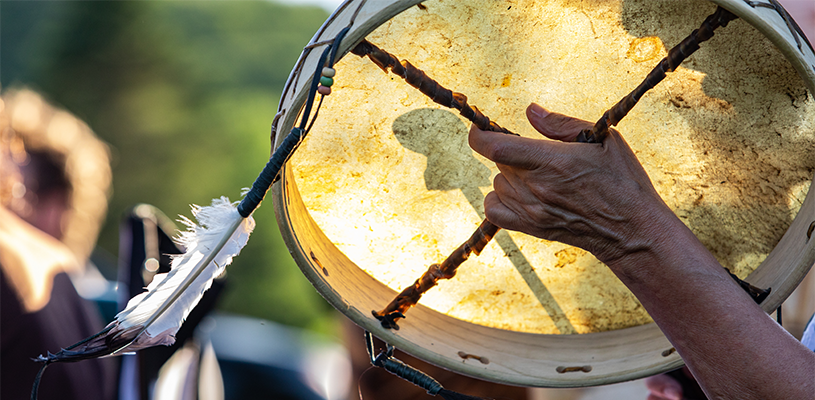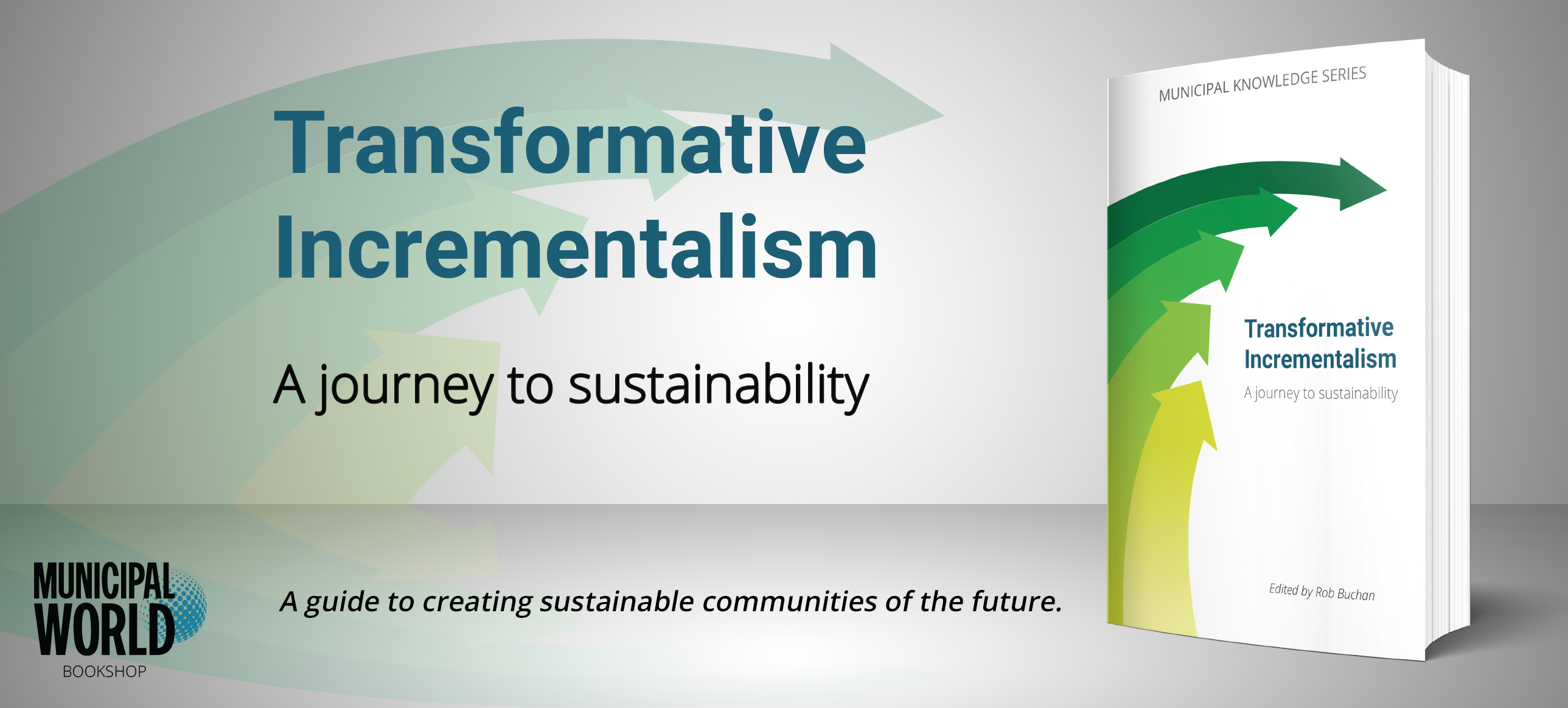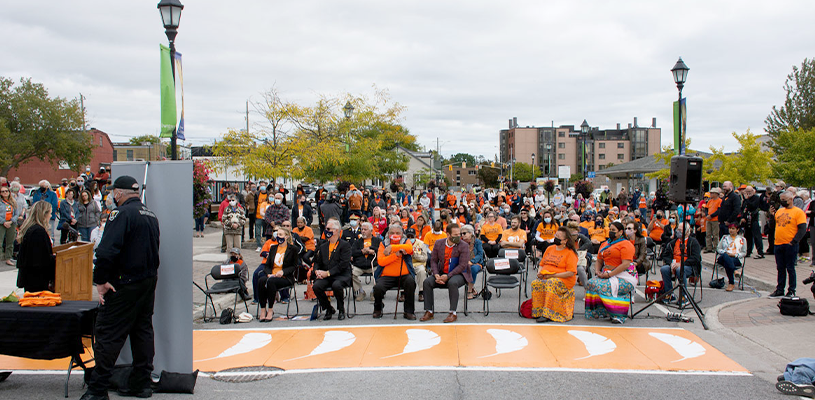Municipalities taking action to support Truth and Reconciliation

In 2015, the Truth and Reconciliation Commission released its final report. Among its 94 Calls to Action was the creation of a federal statutory day of commemoration.
Ottawa announced earlier this year that September 30 would mark the first National Day for Truth and Reconciliation to honour the lost children and Survivors of Residential Schools. It was also hoped that Canadians would use the day to reflect on what they can do to support Reconciliation.
Day for Truth and Reconciliation
Only the provinces of Manitoba, Nova Scotia, and PEI have recognized September 30 as a holiday. Even so, many municipalities across the country have recognized it. Some have even created special programming and community events around it.
That mindset is something Brenda Gunn supports. Gunn is Academic and Research Director at the National Centre for Truth and Reconciliation (NCTR). The centre is the permanent archive for the statements, documents, and other materials created by the Truth and Reconciliation Commission.
Gunn said that recognition of the day is an important part of Reconciliation.
“We’re seeing a ton of interest. It’s great to see that where there may not be strong provincial leadership, municipalities can still step up and recognize the holiday in various ways,” Gunn said. “I do hope that municipalities, as institutions, as governments, but also the people who work within them, spend the time reflecting on the history of Residential Schools. But also on our future. How do we start moving forward in a different way, in a good way, together?”
Municipal Leadership on Reconciliation
The question of how all Canadians move forward is one Carole Saab is also thinking about. Saab is CEO of the Federation of Canadian Municipalities (FCM). The holiday, she said, should “honour the healing journey” of Residential School Survivors. It must also bring awareness to the need for Reconciliation.
Saab said that FCM is taking part in this day of observance as part of its commitment to Reconciliation.
“As an organization, FCM encourages and supports its employees to learn and reflect on the legacy of Residential Schools, and to strengthen how Reconciliation looks in our work,” Saab said. “That commitment toward Reconciliation, and advancing the implementation of the Truth and Reconciliation Commission’s Calls to Action, was recently reaffirmed by both FCM and FCM’s Big City Mayors’ Caucus in the wake of the tragic discovery of the remains of 215 children found on the former site of the Kamloops Indian Residential School.”
Gunn said that it is encouraging to see so many municipalities supporting the day. But, she has a theory of why so many provinces have chosen not to.
There is a lot to unpack about why a province may choose not to recognize the holiday, Gunn said. It’s fair to acknowledge that people are in different places with the Reconciliation process. Racism continues to be “rampant” against Indigenous Peoples. This is a reality even as many people accept the work that needs to happen to support Reconciliation. That said, she acknowledges others may still need convincing.
Gunn said that the identification of unmarked graves at Residential School sites across the country has reawakened the Reconciliation conversation. As such, there has been “a real awakening among Canadians” on the need to take action on Reconciliation.
Education Key to Understanding
There are many things municipalities can do, Gunn said, around the national day. But it all starts with education. Most importantly, the day should include learning about Residential Schools.
Municipalities should also be reading the Calls to Action, Gunn said. They should be thinking of how to fulfill the actions directed toward municipalities. This includes educating staff on the history of Residential Schools and Indigenous cultures. She said that they should also be reading the United Nations Declaration on the Rights of Indigenous Peoples.
One of the more challenging Calls to Action speaks about the role of municipalities in Doctrine of Discovery. This provided a framework for Europeans, in the name of their sovereign, to lay claim to territories uninhabited by Christians.
As such, Gunn said, municipalities need to think about how they were created.
“Under what legal system does the municipality claim to have jurisdiction over the lives of the people?” she asked. “We need to think about what that means for Indigenous Peoples. And for the relationship with Indigenous Peoples. How do we start doing things differently?”
Strengthening Indigenous Relations
Gunn said that the municipal mindset around dealing with Indigenous Peoples is changing. That said, Canada is a very large country with many municipalities. Some are far more advanced than others when it comes to Reconciliation. Some municipalities have a stronger relationship with Indigenous Peoples.
But there are concrete examples of serious change. One example is in Winnipeg, which is home to the NCTR. The city is examining how it considers the names of streets, buildings, and parks. It is also exploring what it means when a building or street is named after someone who – for example – was the architect of a system of genocide.
“Those are really big questions. And whose space is being recognized?” Gunn asked. “It also raises questions about how municipalities make sure that the spaces they create are accessible and friendly and open to Indigenous Peoples.”
Attention is being focused on the National Day for Truth and Reconciliation. But Gunn said there are long-term goals as well. Reconciliation, she said, includes changing the way in which some Canadians see Indigenous Peoples as being a burden.
Gunn said that she hopes Indigenous Peoples will be instead seen as founding partners in Canada. She also hopes Indigenous culture and language will be celebrated for the diversity that they bring to the country.
Action is Key for Reconciliation
Saab said that FCM recognizes the duty of municipalities to respond to the Calls to Action. FCM also acknowledges how the legacy of Residential Schools continues to affect the lives of First Nation, Inuit, and Métis Peoples.
“We commit to increasing our work in this necessary pursuit,” Saab said. “The National Day for Truth and Reconciliation is a moment for everyone, leaders in every order of government included, to reflect upon and recognize the enduring trauma of the Residential School system, but it is also a moment for meaningful action.”
Gunn said she hopes Reconciliation leads to time where all Canadians have the same life expectancy. She hopes it leads to the same access to resources and services. She also looks forward to Indigenous Peoples gaining that access without experiencing racism and violence.
Gunn said that people will act differently when more people understand the history, legacy, and connection between intergenerational harms and the trauma of Residential Schools.
It’s also not just individual actions, Gunn said. There must be a change in the way systems continue to operate and negatively impact Indigenous Peoples. Or, at least, there needs to be a system that doesn’t fail to create equal opportunities for everyone.
“Reconciliation means that these systems that are set up to support Canadians start supporting Indigenous Peoples and aren’t doing more harm,” she said. “Those systems also need to change. That’s where municipalities need to think through their work … their ways of doing things … so as not to perpetuate the exclusion of Indigenous Peoples.” MW
✯ Municipal World Insider and Executive Members: You might also be interested in Robert Shipley’s article: Let’s Make Turtle Island Great Again.
Sean Meyer is Senior Content Editor for Municipal World.



